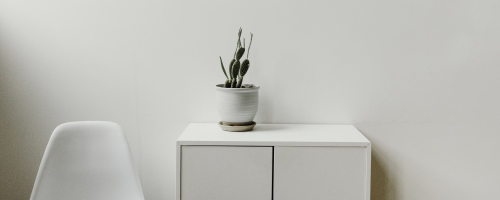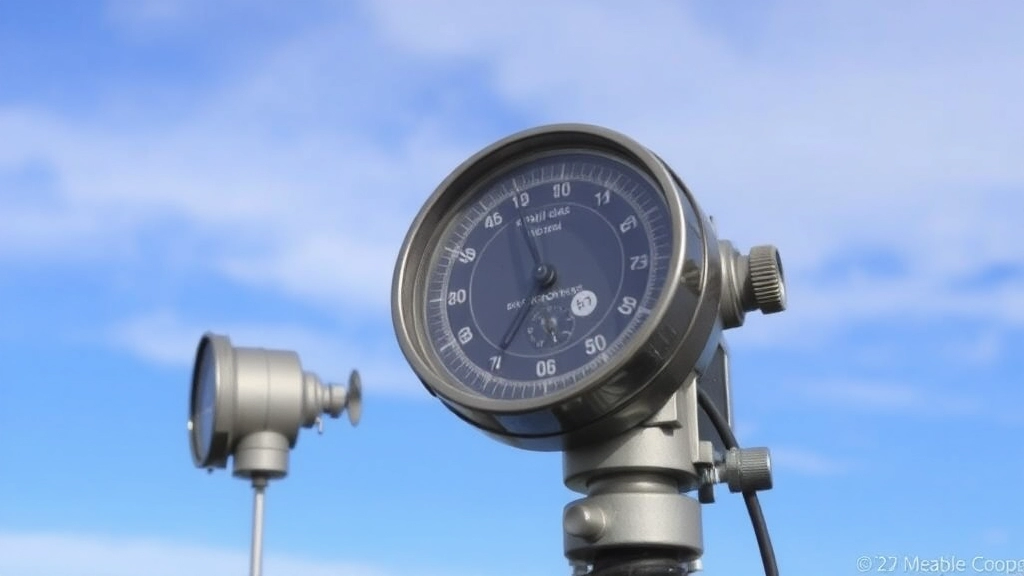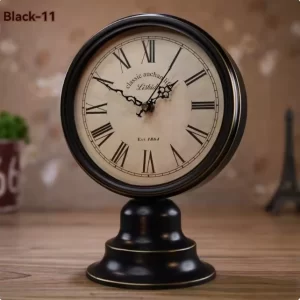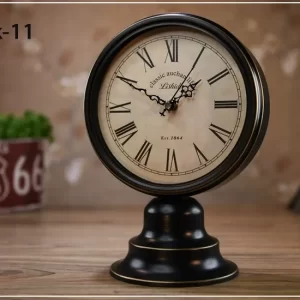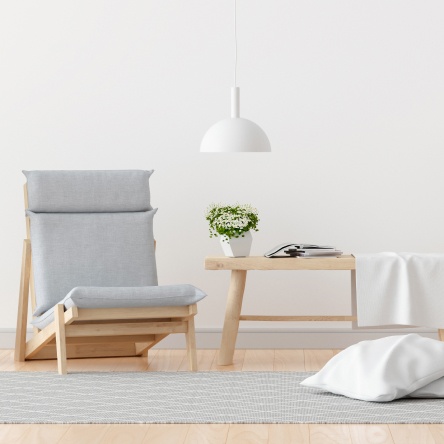MantelClock Studio.
The Complete Guide to Weather Instruments
Since the dawn of mankind, we have had an innate curiosity about the world around us-whether it’s the movement of celestial bodies in the night sky or the weather patterns that affect our environment. Early civilizations relied heavily on the weather to survive, resulting in early prototype weather instruments, many of which have evolved into the tools we use today.
A Brief History of Weather Instruments
The word “meteorology” originated in Greece in 600 BC from the word Meteros, meaning “high sky”. However, the origins of meteorology can be traced back even further to ancient India in 3000 B.C., with early texts discussing cloud formation and weather phenomena. Around 600 B.C., the Babylonians relied on observing clouds to predict the weather, while Greece issued the first public weather forecasts to aid in agriculture. Between 500 and 300 B.C., the rain gauge, an important meteorological instrument, appeared in Greece and India. Aristotle’s Meteorologia (340 BC) is the earliest surviving comprehensive treatise on meteorology, and despite the lack of advanced tools at the time, Aristotle is still regarded as one of the pioneers in the field.
In ancient China, the first prototype of the hygrometer was invented during the Western Han Dynasty (206 BC). Centuries later, Leonardo da Vinci invented the first Western hygrometer in 1480. During the medieval period, Galileo invented the thermometer, a precursor to the thermometer. Later, inventors such as Isaac Newton improved the scale of the thermometer, while Torricelli invented the first barometer in 1643.
These instruments laid the foundation for modern meteorology, demonstrating man’s timeless efforts to measure and predict weather conditions. Although the history of weather forecasting predates written history, these instruments highlight the amazing developments in meteorological science.
What is a meteorological instrument?
A weather instrument is a device used to measure changes in specific atmospheric conditions over time and can help scientists, meteorologists and even hobbyists understand weather and climate patterns. From barometers and thermometers to hygrometers, rain gauges, and fully integrated weather stations, each instrument provides valuable insights into an ever-changing environment. By combining multiple instruments in a single weather station, detailed images of outdoor conditions can be generated, allowing for more accurate weather forecasts.
Today, there is a wide range of weather instruments available for professional and personal use. Whether it’s for scientific research, home monitoring, or hobbies, weather instruments help us observe and adapt to weather conditions that directly affect our lives. Just as ancient societies relied on the weather for survival, modern tools continue to deepen our understanding of climate and the environment.
Explore Weather Instruments
Barometers
In today’s world, the ability to forecast the weather is often taken for granted. However, just over a century ago, weather forecasting relied heavily on personal observations of changes in barometric pressure. The invention of the barometer revolutionized weather forecasting by providing an accurate method of measuring atmospheric pressure.
The word “barometer” comes from the Greek words baros (weight) and metron (measure), meaning “to measure the weight of the air”, and was invented in 1643 by Evangelista Torricelli, who invented the first barometer, which stood over 10 meters high and used mercury to measure atmospheric pressure. It used mercury to measure atmospheric pressure. The higher the pressure, the better the weather; the lower the pressure, a sign of an approaching storm. Over time, barometers evolved into smaller, easier-to-use tools, including the 1844 invention of the liquidless barometer by Lucien Verdi, which used a flexible metal cartridge instead of a liquid to measure pressure.
Modern barometers also include digital barometers, which use advanced sensors to accurately measure atmospheric pressure. These digital models are now an integral part of weather stations and are widely used for professional and home monitoring.
Hygrometers
A hygrometer is an important meteorological instrument used to measure the percentage of humidity. Hygrometers were first developed as prototypes during the Western Han Dynasty (206 B.C.), and in 1480, Leonardo da Vinci built the first Western hygrometer. in 1783, scientists began using hair to measure humidity because of its ability to expand and contract with the absorption of moisture.
Modern hygrometers often use synthetic fibers or treated natural hair as the measuring element. When the material absorbs moisture, it triggers a fine mechanism that moves a pointer to indicate relative humidity. Hygrometers are particularly useful for monitoring indoor environments because they help regulate humidity and prevent furniture from cracking due to dryness or swelling and mold due to moisture.
Today, digital hygrometers provide accurate humidity readings and are often paired with weather stations, making them a great value for both personal and professional use.
Thermometers
The thermometer is a basic tool for measuring temperature and dates back to ancient Greek times. The modern thermometer began to take shape during the Renaissance, when Galileo invented the thermometer, an early device for measuring temperature changes without a scale, and in 1612 Santorio added a numerical scale to create the first prototype thermometer, and in 1714 Daniel Fahrenheit designed the first reliable thermometer, using mercury to improve accuracy.
Thermometers work by detecting temperature fluctuations that cause the mercury, gas or alcohol in the glass tube to expand or contract. Modern thermometers are often equipped with digital sensors that provide highly accurate temperature readings in both Celsius and Fahrenheit temperature units. These versatile instruments are essential for monitoring everything from indoor environments to outdoor weather patterns, and are a key component of an integrated weather station.
At Mantle Clockworks, we applaud the history of excellence and innovation behind weather instruments. From barometers to thermometers and hygrometers, these tools are not only vital to understanding the weather, but essential to improving everyday life. Whether you’re a professional meteorologist or a weather enthusiast, these instruments provide the perfect solution for observing and monitoring atmospheric conditions. Explore our full line of weather instruments and weather stations to stay connected to the ever-changing world around you.
Thermometers
Thermometers have always been an important tool for measuring temperature, and there are several types of modern thermometers. These include mercury thermometers, digital thermometers, ear thermometers and infrared thermometers. Whether for home use, professional environments or meteorological purposes, thermometers are essential for monitoring temperature changes and ensuring the accuracy of climate-related observations.
Weather Stations
Weather Stations integrate multiple independent instruments into a single device that provides a comprehensive view of current weather conditions, which is essential for producing reliable weather forecasts. Weather Stations are available in a variety of designs, from traditional banjo styles and nautical themes to sleek, modern options such as stainless steel models or innovative rotatable cubes. These versatile tools are suitable for both home and professional use, and users can customize the instruments to suit their specific needs. Commonly used instruments at weather stations include barometers, thermometers and hygrometers. It is also becoming increasingly popular for hobbyists and weather enthusiasts to build DIY weather stations using standalone weather instruments.
Why choose a multifunctional weather station?
The main purpose of a weather station is to measure key environmental factors, specifically Relative Humidity (RH). This requires data from a hygrometer to assess water vapor, and data from a thermometer to monitor temperature.
-
Elegant Black Mantel Clock for Living Room – Silent & Stylish
Original price was: $180.00.$170.00Current price is: $170.00.
What is relative humidity?
Relative humidity is the percentage of moisture (water vapor) that air can hold at a given temperature. The hotter the air, the more moisture it contains, which means that in a warmer environment, the relative humidity will be lower even if the water vapor content is the same. Conversely, the colder the air, the higher the relative humidity. Relative humidity is very sensitive to changes in temperature and pressure. When air reaches 100% relative humidity, it holds the greatest amount of water vapor at that temperature, a point known as the dew point.
Humidity and Relative Humidity
Humidity is the total amount of water vapor in the air, while Relative Humidity is the percentage of water vapor in the air at a given temperature. Humidity is commonly used to predict weather conditions such as rainfall, fog or mist, while relative humidity affects climate control and is directly related to human health, safety and comfort.
The Importance of Measuring Relative Humidity
Measuring relative humidity is critical to managing humidity levels in a given environment. Properly controlling humidity ensures that sensitive products, materials and machinery are not damaged, while reducing the risk of mold growth that can harm human health. Relative humidity is a critical factor in maintaining a comfortable home environment and ensuring the longevity of building materials, vehicles and other equipment.
Weather House
German Weather House
Invented in 1726 by Jacob Lepold, the Weather House is a fascinating combination of art and function. Designed to resemble the traditional Black Forest Cuckoo Clock, the Weather House acts as a hygrometer, measuring the humidity level of the surrounding air. The German Weather Clock, whose shape is inspired by the alpine chalets of Germany, Switzerland and Austria, has two openings in which figurines predicting the weather are placed. When the weather is sunny and dry (low humidity), the female statue comes out; when the weather is rainy and humid (high humidity), the male statue comes out. These actions are driven by a thin fiber wire that is sensitive to changes in humidity. For accurate readings, the Weather House should be placed in a well-ventilated area, away from air conditioning or artificial air currents.
Explore Weather Instruments from Mantel Clockworks
Are you looking for a weather station that will complement your home décor? Or are you looking for the perfect gift for a weather enthusiast? At MantelClock Studio, we offer a wide variety of weather instruments to choose from to suit any style or purpose. Whether you want a precision-designed Barometer, an elegant Thermometer, or a whimsical German Weather House, we have the perfect choice for you. Our select collection includes hygrometers, Galileo thermometers and novel weather figurines, all from renowned European artisans. Focusing on quality craftsmanship, accuracy and reliability, our products are both practical and decorative.

